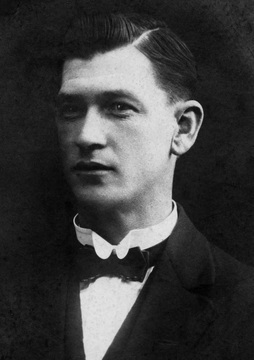FITZPATRICK, William
| Service Number: | 541 |
|---|---|
| Enlisted: | 18 August 1914, Ballarat, Victoria |
| Last Rank: | Private |
| Last Unit: | 7th Infantry Battalion |
| Born: | Creswick, Victoria (1891), date not yet discovered |
| Home Town: | Footscray, Maribyrnong, Victoria |
| Schooling: | Not yet discovered |
| Occupation: | Labourer |
| Died: | Broncho pneumonia (terminal), Hawthorn, Victoria, 7 October 1971, age not yet discovered |
| Cemetery: | Not yet discovered |
| Memorials: |
World War 1 Service
| 18 Aug 1914: | Enlisted AIF WW1, Ballarat, Victoria | |
|---|---|---|
| 19 Oct 1914: | Involvement AIF WW1, Private, 541, 7th Infantry Battalion, --- :embarkation_roll: roll_number: '9' embarkation_place: Melbourne embarkation_ship: HMAT Hororata embarkation_ship_number: A20 public_note: '' | |
| 19 Oct 1914: | Embarked AIF WW1, Private, 541, 7th Infantry Battalion, HMAT Hororata, Melbourne |
Help us honour William Fitzpatrick's service by contributing information, stories, and images so that they can be preserved for future generations.
Add my storyBiography
William (Bill) Thomas Fitzpatrick, the son of a miner, was a 23 year old labourer from 56 Cowper St Footscray. When war broke out and the recruiting offices opened, he was very keen to enlist – his service number was 541. He served with E Company of the 7th Battalion, 2nd Brigade, 1st Division of the AIF.
Bill’s Battalion marched in a parade through the City of Melbourne in September 1914. Two weeks later they sailed for the Middle East on HMT Hororata. The Hororata docked in Egypt on December 2nd 1914. After training they spent a period guarding the Suez Canal. In early April 1915, the battalion was moved first to Alexandria and then sailed for the Island of Lemnos.
The 7th Battalion landed at Anzac Cove as part of the second wave of landings on the morning of April 25th 1915. Upon reaching the top of the cliffs, Bill received a gunshot wound to his right forearm. Like most others, Bill did not talk about his experience much. But once, probably after a few beers, he spoke about that day at Gallipoli. After he had been helped down to the beach, he lay on the sand with the other wounded waiting to be evacuated. He said that stray bullets and shrapnel kept sweeping the area. People were being wounded again and the odd one killed as they lay there.
He was evacuated to Cairo on the Hospital ship Gascon. After months of intermittent treatment, he was sent back to Australia on the HMT Hororata. For a while he was stationed at a large military camp on what are now the grounds of the Shrine of Remembrance. In February of 1916, he was discharged as unfit for military service.
After his discharge he worked for customs inspecting ships. At a later stage he was a shop steward at Vickers Ruwolt in Richmond. He was fired as a trouble maker. His troublemaking involved a campaign to have doors fitted to the cubicles in the ladies toilets so that they could have some privacy. At that time they were not fitted with doors so that supervisors could check for malingerers.
He met and married Daisy Scarborough and they had four children, Mollie, John, Josephine and Geraldine. John served as a signaller with the 2/2 Field Regiment in WW2 and served in the early desert campaigns, Greece and Crete.
In 1920, Bill made an unsuccessful attempt to be elected as the Labor candidate to the Footscray council. During the Second World War he worked as a projectionist at the Victoria Barracks in Melbourne. He remained in the Public Service until ill health forced him to retire.
Bill died laughing. He was in a nursing home and a nurse was with him. He gave her some cheek and she laughed and gave him some back. He laughed a couple of times and then went silent – unusual for him. When the nurse turned back to look at him he had passed away. He had a long life and an easy death compared to some of the mates that he left behind on Gallipoli.
*Bill was buried at the Springvale Botanical Cemetery










